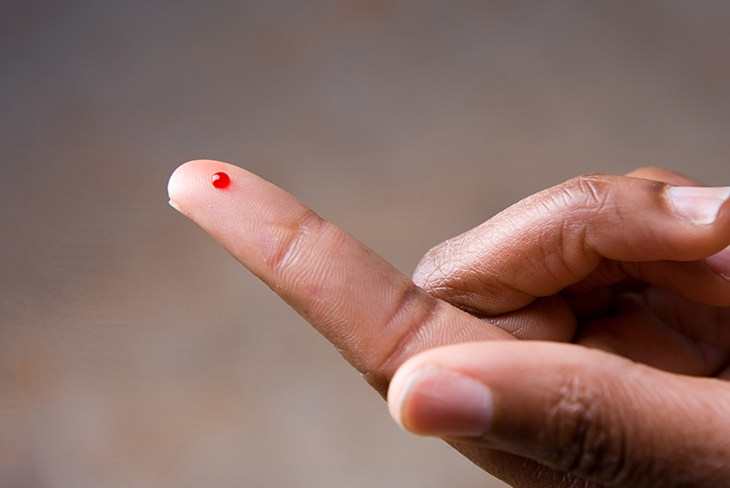Raising awareness about haemophilia

Blood is life-giving and precious, but what if a blood disorder is life-threatening? Here’s what you need to know about one of the more common blood disorders.
Haemophilia is an inherited blood disorder where a person’s blood does not clot sufficiently. Severe and moderate forms of the disease are often diagnosed within the first year of life; milder forms, however, may only be diagnosed later.
Blood contains a protein called clotting factor that controls bleeding so that a person doesn’t lose a life-threatening amount of blood. When this clotting factor is absent or reduced, people will bleed more than usual after an injury, procedure or surgery. They can, however, also have dangerous bleeding episodes (haemorrhages) for no reason at all. The South African Haemophilia Foundation explains that dangerous haemorrhages most often occur internally in joints and muscles, causing severe pain.
What causes haemophilia?
There are three main types of this lifelong bleeding disorder:
- Haemophilia A: the most common form, which is due to reduced levels of clotting factor VIII (8)
- Haemophilia B: also known as Christmas disease, it’s due to reduced levels of clotting factor IX (9)
- Haemophilia C: a mild form of the disease, affecting both sexes, and it’s due to a factor IX (9) deficiency
There are also levels of severity – from mild to moderate and severe.
- Mild: bleeding as a result of tooth extraction, surgery, injury or accident; might never have a bleeding problem. Level of factor VIII or IX in the blood: 5–40% of normal.
- Moderate: bleeds occur, but are directly related to minor injuries and dental work. The level of factor VIII or IX in the blood is 1–5% of normal.
- Severe: Often has bleeds into joints and muscles and other soft tissues, and for no obvious reason. Bleeding can occur from minor bumps or unconscious knocks during sleep. The level of factor VIII or IX in the blood is less than 1% of normal.
Haemophilia symptoms
Since haemophilia is usually diagnosed in babies, the first sign is often heavy bleeding from the mouth from biting their gums and tongue or severe bruising. While most people associate bleeding with an external injury, in people with haemophilia severe bleeding occurs inside the soft tissues of the body. Common symptoms of both types are:
- Prolonged bleeding from a cut, dental work or surgery
- Prominent, significant bruising
- Bleeding into muscles and joints
- Extended bleeding after an accident
Diagnosis and treatment
According to the World Federation of Hemophilia, Haemophilia is diagnosed by taking a blood sample and measuring the level of clotting factor activity in the blood. Haemophilia A is diagnosed by testing the level of factor VIII activity and Haemophilia B is diagnosed by measuring the level of factor IX activity. Haemophilia inheritance might prompt a baby’s parents to test for the disorder before birth so that they are better prepared to deal with the condition. A prenatal test can be done between nine and 11 weeks by chronic villus sampling (CVS) or after birth with a blood sample (18+ weeks).
A multidisciplinary approach to treatment and the prevention of bleeds is important to prevent damage to joints, muscles and organs. Most severe cases are treated with injections of clotting factor since the body cannot produce its own. Early diagnosis and appropriate treatment can help to effectively manage the condition.
Haemophilia genetics
When the mother carries the haemophilia gene and the father is unaffected, there is a 50% chance at each birth that a son will have haemophilia. There is a 50% chance at each birth that a daughter will carry the haemophilia gene.
When the father has haemophilia and the mother is unaffected, none of the sons will inherit the disorder. All the daughters will carry the gene but won’t inherit the disorder.
Interesting haemophilia facts
- In South Africa, one in 5,000 boys are born with haemophilia.
- The disease appears to affect more boys than girls.
- It is sometimes called Christmas disease, and is so named after the first-diagnosed patient Stephen Christmas, recorded in medical literature in 1952.
- There is no cure, but people who have the disease can live full, long and active lives.
World Haemophilia Day is celebrated on 17 April. For more information, visit http://www.worldhemophiliaday.org
The information is shared on condition that readers will make their own determination, including seeking advice from a healthcare professional. E&OE. Life Healthcare Group Ltd does not accept any responsibility for any loss or damage suffered by the reader as a result of the information provided.

